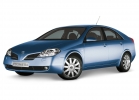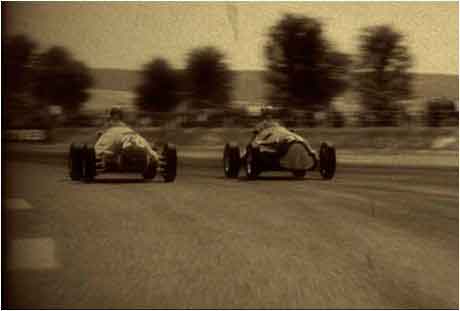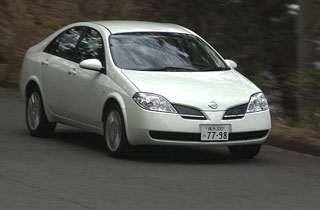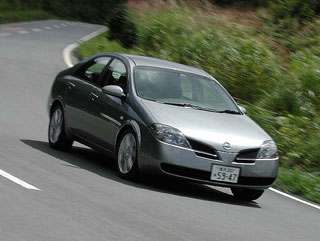Test drive Nissan Primera sedan since 2002 sedan
An unusual example
As before, customers are offered a very wide range of models: three types of bodies, three gasoline engines, four gearboxes and three equipment options - not an example of some competitors.The goods are face
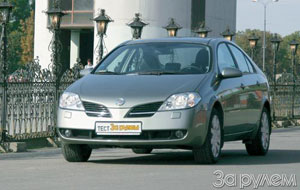
In the summer of this year, the well-known Nissan premer was modernized. The appearance remained the same - the main changes affected the chassis and interior, a little got the steering and electronic systems.
As before, customers are offered a very wide range of models: three types of bodies, three gasoline engines, four gearboxes and three equipment options - not an example of some competitors. Of course, not everything can be combined arbitrarily, but 32 options offered by official dealers will satisfy anyone. However, for a fee, there is an opportunity to order something else.
To match the variety of options and the price range - from $ 22,200 per sedan with a 1.6 liter engine, a mechanical gearbox and a basic equipment option up to $ 32,200 for a 2 -liter station wagon with a variator in a maximum configuration, with a leather salon and an electric hatch in the roof.
We will not represent all possible sets - we will only denote the guidelines. A car with a 1.6 liter engine is only with a sedan body and a five -speed manual gearbox ($ 22,200-23 200). But with a 1.8 liter engine, you can buy a sedan (from $ 24,600), and hatchback (from $ 25,800), and station wagon (from $ 26,100). Finally, the prices of cars with the same three types of body and 2.0 liters begin, respectively, from $ 27,500, 27 700 and 30,000. Automatic gearbox is offered only with a 1.8 liter engine, the variator is only with 2 -liter. In addition, the most powerful machines are equipped with a mechanical box not with five, but with six steps.
The basic equipment examples corresponds to the high level offered in the D-class: electric glasses and mirrors, heating all the necessary, six airbags, fog lights, climate control, leather steering wheel, audio system with a CD player and control on the steering wheel. There is also a normal set of systems: ABS with electronic brake force distribution (EBD), Extrantal braking Brake Assist and a completely non -traditional rear view chamber. Well, in the richest configuration, everything else, including, for example, tire pressure sensors. On our test, the car in the Tekna configuration (see table) with a 2-liter engine and a variator.
Outside and inside
 No matter how common the word is unusual, it most accurately characterizes the appearance of examples after restyling. As marketers found out, it is a non -standard appearance that prompts future buyers to pay attention to the car for the first time.
No matter how common the word is unusual, it most accurately characterizes the appearance of examples after restyling. As marketers found out, it is a non -standard appearance that prompts future buyers to pay attention to the car for the first time. However, the decisions used in the interior can not be attributed to ordinary. One of them is the devices located in the middle of the front panel. At first it seems strange, then you adapt. The author did not manage to completely get used to the innovation during the short test, but noted the advantages of such a decision. Instead of the usual 30 cm, on which dials and control icons are compared, here they are allocated about half a meter.
Another interesting device for which most will vote with both hands is the rear view camera. As soon as the driver translates the gearbox selector to the rear route, a picture appears on the color screen in 5.8 inches. It is useful not only for novice drivers, but also experienced when they are squeezed to the parking lot.
A steering wheel is put on an updated example, which was provided for the correct grip (with thickenings for without ten two). The steering column of all cars has two adjustments - along the length and angle of inclination. Along with the ability to change the height of the pillow, this gives expanse in choosing a convenient planting.
As befits a D-class model, Nissan provides enough space for the rear passengers. Three will not push too much.
The height of the salon in the back will satisfy people with tall above the average, in front - very high. I want more - donate a hatch in the roof, add a few more centimeters.
The volume and shape of the trunk, the possibility of transforming the salon, the number and location of containers for small objects as a whole correspond to the expected level of comfort.
How to go
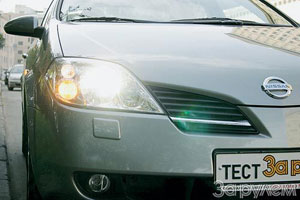 Having received the opportunity to once again intervene in the design of serial machines, engineers changed the characteristics of the suspension and steering. The rigidity of the front springs was increased by 18%, and in order to maintain comfort, another valve was added to the shock absorbers pistons. For more accurate manageability, the rigidity of the front stabilizer was reduced and at the same time changed the hydraulic power settings, increasing its performance during parking. In general, Nissan became more driver, possibly with a very slight loss of comfort.
Having received the opportunity to once again intervene in the design of serial machines, engineers changed the characteristics of the suspension and steering. The rigidity of the front springs was increased by 18%, and in order to maintain comfort, another valve was added to the shock absorbers pistons. For more accurate manageability, the rigidity of the front stabilizer was reduced and at the same time changed the hydraulic power settings, increasing its performance during parking. In general, Nissan became more driver, possibly with a very slight loss of comfort. The car suspension acquired almost German density. The steering of the current examples is moderately acute, and most importantly, accurate at high, by our standards, speed. The machine adequately reacts even to a sharp operation by the steering wheel when the speedometer is indicated far over a hundred.
Another interesting feature is a variator that provides a basement gear shift. With calm driving, he maintains engine speed in the optimal fuel of the zone, smoothly reducing the total gear ratio of the transmission. With intensive acceleration, it retains maximum power. If you do not pay attention to the monotonous sound of the motor, then everything is as with an ordinary automaton, but without any steps when switching. However, if desired, they can be organized.
If you push the gearbox selector to the right, the car at the software level will begin to imitate a six -speed gearbox with sequential switching. He pumped the lever forward - to the step up, pumped back - to the step down. But unlike a similar mechanical system, the variator almost does not slow down the engine. Therefore, the car was equipped with four disk brakes. In front, of course, with ventilation.
Summarizing, briefly, I will call an example from the outside and inside the D-class car, interesting in management and with an extensive range of modifications.
Configuration of Nissan-premer
 Comfort
Comfort Frontary airbags, front side pillows, side curtains for front and rear passengers, active head restraints, heated front seats, fog lights, leather steering wheel upholstery, electric windows, headlights, ABS with an electronic brake distribution system (EBD), Brake Assist, Brake Assist, Brake Assist ISOFIX children's seats, central remote control, immobilizer, audio system with CD-player and steering wheel control.
Elegance, additionally
Anti-angle system, wipers with a rain sensor, 16-inch alloy wheels, cruise control (except for engine 1.6 l).
Tekna, additionally
Xenon headlights with auto-correction of the level of tilt, 17-inch alloy wheels, tire pressure control, an audio system with a CD changer for 6 discs.
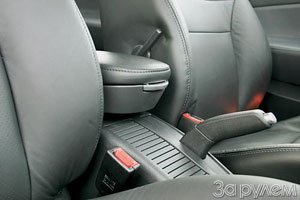
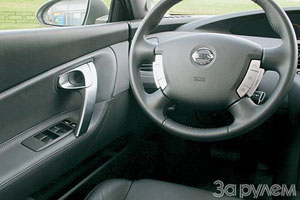
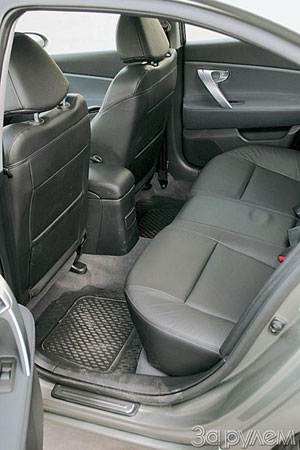
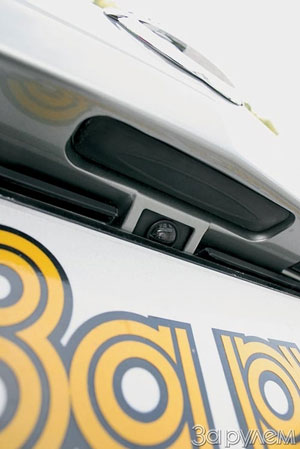
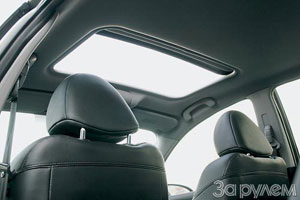
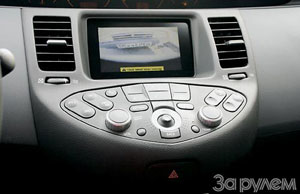
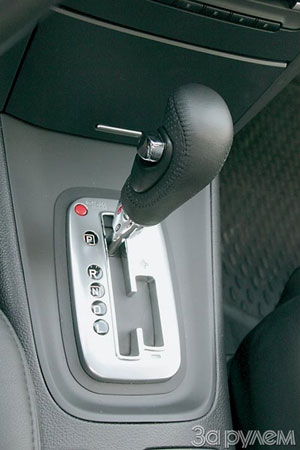
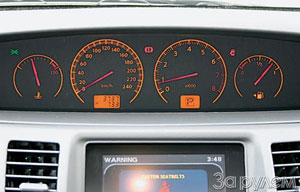
Alexander Budkin
A source: The magazine "Driving"
Video Crash tests Nissan Primera sedan since 2002
Nissan Primera Sedan tests since 2002
Nissan Primera Crash Test sedan since 2002
Krassh Test: Detailed Information29%
Driver and passengers
9%
Pedestrians
Nissan Primera malfunctions since 2002
Nissan Primera Sedan malfunctions: Detailed information| Primera sedan since 2002 | |
|---|---|
| Engine |  |
| Transmission |  |
| Control system and suspension |  |
| Brake system |  |
| Air heating and air conditioning |  |
| Launch and charging system |  |
| Electric components and so on |  |
| Corrosion body stability |  |


